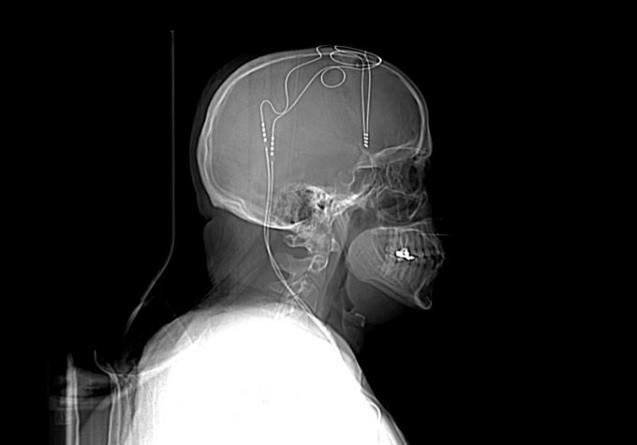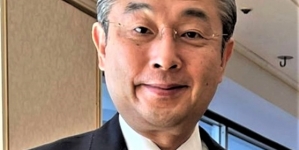-
LONDON: Indian-Origin Teen In UK Gets “Life-Changing” Cancer Treatment - April 25, 2024
-
SILICON VALLEY: All About Pavan Davuluri, New Head Of Microsoft Windows - April 25, 2024
-
LONDON: UK’s India Gate To Commemorate Role Of Indian Soldiers From World Wars - April 24, 2024
-
HARARE: Shri Bramha Kumar appointed as the next Ambassador of India to the Republic of Zimbabwe - April 23, 2024
-
LONDON: Indian-Origin Principal Wins UK Legal Challenge Over School Prayer Ban - April 23, 2024
-
TORONTO: Indian-Origin Doctor Needs ₹ 2 Crore For Legal Fees. Elon Musk Responds - April 22, 2024
-
KINSHASA: India-Democratic Republic of Congo Foreign Office Consultations - April 21, 2024
-
LONDON: UK Court Allows Sale Of Nirav Modi’s Luxury London Apartment - April 21, 2024
-
TEHRAN: Travel advisory for Iran and Israel - April 20, 2024
-
LUXEMBOURG: Shri Saurabh Kumar concurrently accredited as the next Ambassador of India to the Grand Duchy of Luxembourg - April 20, 2024
TOKYO: How brain implants are treating depression
TOKYO: On a hot, sunny Sunday afternoon in Manhattan, time froze for Jon Nelson. He stood on the sidewalk and said good-bye to his three kids, whose grandfather had come into the city from Long Island to pick them up.
Like any parent, Jon is deeply attuned to his children’s quirks. His oldest? Sometimes quiet but bitingly funny. His middle kid? Rates dad a 10 out of 10 on the embarrassment scale and doesn’t need a hug. His 10-year-old son, the baby of the family, is the emotional one. “My youngest son would climb back up into my wife’s womb if he could,” Jon says. “He’s that kid.”
Headlines and summaries of the latest Science News articles, delivered to your email inbox every Thursday.
An unexpected parade had snarled traffic, so Jon parked illegally along a yellow curb on 36th Street, near where his father-in-law was waiting. It was time to go. His youngest gave the last hug. “He looked up, scared and sad,” Jon says, and asked, “Dad, am I going to see you again?”
That question stopped the clock. “I was like, ‘Oh man,’” Jon says. “It was one of those moments where I was living it through his eyes. And I got scared for the first time.”
Until that good-bye, Jon hadn’t wanted to live. For years, he had a constant yearning to die — he talks about it like it was an addiction — as he fought deep, debilitating depression. But his son’s question pierced through that heaviness and reached something inside him. “That was the first time I really thought about it. I was like, ‘I kind of hope I don’t die.’ I hadn’t had that feeling in so long.”
That hug happened around 5 p.m. on August 21, 2022. Twelve hours later, Jon was wheeled into a surgical suite.
There, at Mount Sinai’s hospital just southwest of Central Park, surgery team members screwed Jon’s head into a frame to hold it still. Then they numbed him and drilled two small holes through the top of his skull, one on each side.
Through each hole, a surgeon plunged a long, thin wire dotted at the end with electrodes deep into his brain. The wiring, threaded under his skin, snaked around the outside of Jon’s skull and sank down behind his ear. From there, a wire wrapped around to the front, meeting a battery-powered control box that surgeons implanted in his chest, just below his collarbone.
During the surgery and in the days after, doctors sent small pulses of electricity into Jon’s brain. In ways that are still unclear, this electrical tinkering changes the messages that move between different brain regions. The doctors and researchers had what seems like a bold goal: They wanted these pulses to pull Jon out of the darkness of depression.
Jon is one of dozens of people in the United States currently in clinical trials that aim to heal mental disorders with brain implants.
The technique is called deep brain stimulation, and it’s built on the scientific premise that electrical stimulation can reset brains that are in the grip of powerful and devastating psychiatric disorders such as depression, obsessive-compulsive disorder and post-traumatic stress disorder.
Watch a video of Jon describing his depression, his experience with DBS and how his mental health affects his family.
Introducing deep brain stimulation
I first heard about deep brain stimulation, or DBS, more than a decade ago, in 2010. As a science reporter, I was sitting in a cavernous conference room packed with neuroscientists in San Diego. We were listening to a presentation by Helen Mayberg, a neurologist and neuroscientist who was then at Emory University in Atlanta.
As she spoke, Mayberg walked the audience through the scientific rationale for the idea that electrodes pushed down into the brain could alleviate severe depression.
Toward the end of her presentation, Mayberg showed a video of a woman who had severe depression. The day before the video was taken, doctors had implanted electrodes into the woman’s brain.
The researchers in the video turned on the stimulation, and within a minute, just like that, the woman wanted to smile and laugh. That transformation floored me, and judging by the audience reaction, a lot of other people too.
In November of 2022, I caught up with Mayberg, again at a neuroscience meeting, again in San Diego. We talked about what had happened in the years since that presentation and where this research is going. It hasn’t been an easy road, says Mayberg, who now directs the Nash Family Center for Advanced Circuit Therapeutics at the Icahn School of Medicine at Mount Sinai. The science of DBS has taken lots of twists and turns.
So have the journeys of people who have participated in this research. To hear one of those stories, Mayberg put me in touch with Jon.
For this series, I talked with him and his wife, as well as three other people who had lived with severe depression and are now being treated with deep brain stimulation. These people’s paths have been incredibly tough. And while they still face challenges, they have been crystal clear about what DBS has done for them: This experimental brain surgery has given them back their lives.For deep brain stimulation, thin wires that contain electrodes were inserted deep into Jon Nelson’s brain, where they are thought to change the activity of neural pathways.The Nash Family Center for Advanced Circuit Therapeutics, Icahn School of Medicine at Mount Sinai
The darkness of depression
Jon’s a sharp, funny middle-aged guy, a self-described “character,” who lives in a picturesque small town northeast of Philadelphia. He’s a dad with three busy kids and a garage packed with hockey sticks, softball catcher pads, golf clubs, balls of all sorts, bikes, in-line skates, a mesh goal and a supercute white motor scooter.
He’s a coach (hockey and softball) known for dispensing “isms” and the phrase, “I’m going to give you some life advice.” He’s a husband who worries about his wife doing too much and not taking care of herself. He’s in advertising, a people person who used to love having his friends over to hang around his fire pit.
For a decade, Jon let his outgoing personality carry him as he struggled to overcome his depression. His disease, and the suicidal thoughts it forced on him, grew worse in the last five years. On the outside, Jon was the hypersocial, high-functioning guy everyone expected him to be.
But inside, his profound depression was a private hell, he says. “I’d be the one standing in front of everybody leading a champagne toast, and then I’d be driving home and wanting to slam my car into a tree.”
Jon fantasized about other deaths: A mugging, a plane crash. Until Jon’s son asked if he would see Jon again, on the evening before the procedure, Jon even nurtured a little bit of hope that he might die during the brain surgery he volunteered for.
Jon’s depression also stole his motivation, leaving him wrung out and isolated from his family. He overate, overslept and drank too much. His worst stretches, he suspects, left his family traumatized.
Talk therapy, antidepressants, antipsychotics, ketamine, cannabis, transcranial magnetic stimulation (in which magnetic fields target nerve cells through the skull), several residential treatment stints, even electroconvulsive therapy, which left him with intense memory loss — none of these treatments reliably worked for him.
An estimated 280 million people worldwide have major depression. A subset of that giant number will ultimately fall into a hopeless-sounding diagnosis: “treatment-resistant depression” or “intractable depression.” In the United States, an estimated 2.8 million people have that diagnosis.
Jon is one of them. For him and his family, deep brain stimulation was a last-ditch, desperate maneuver. It was his Hail Mary.























